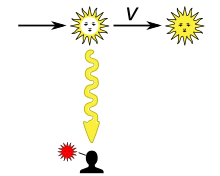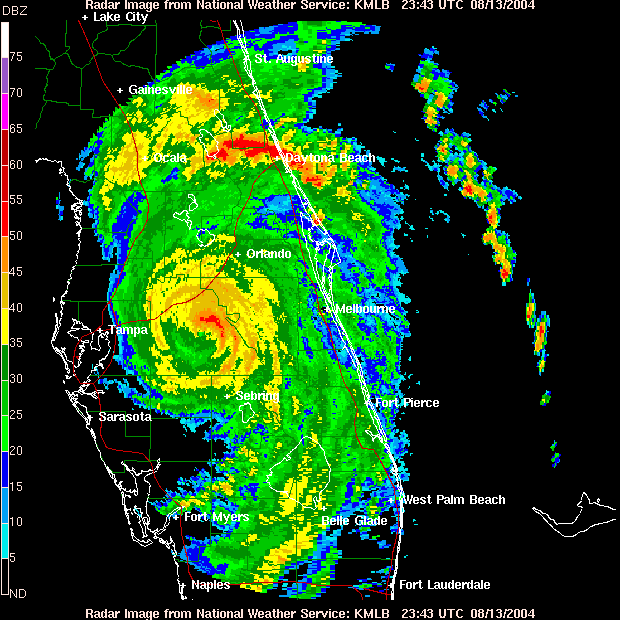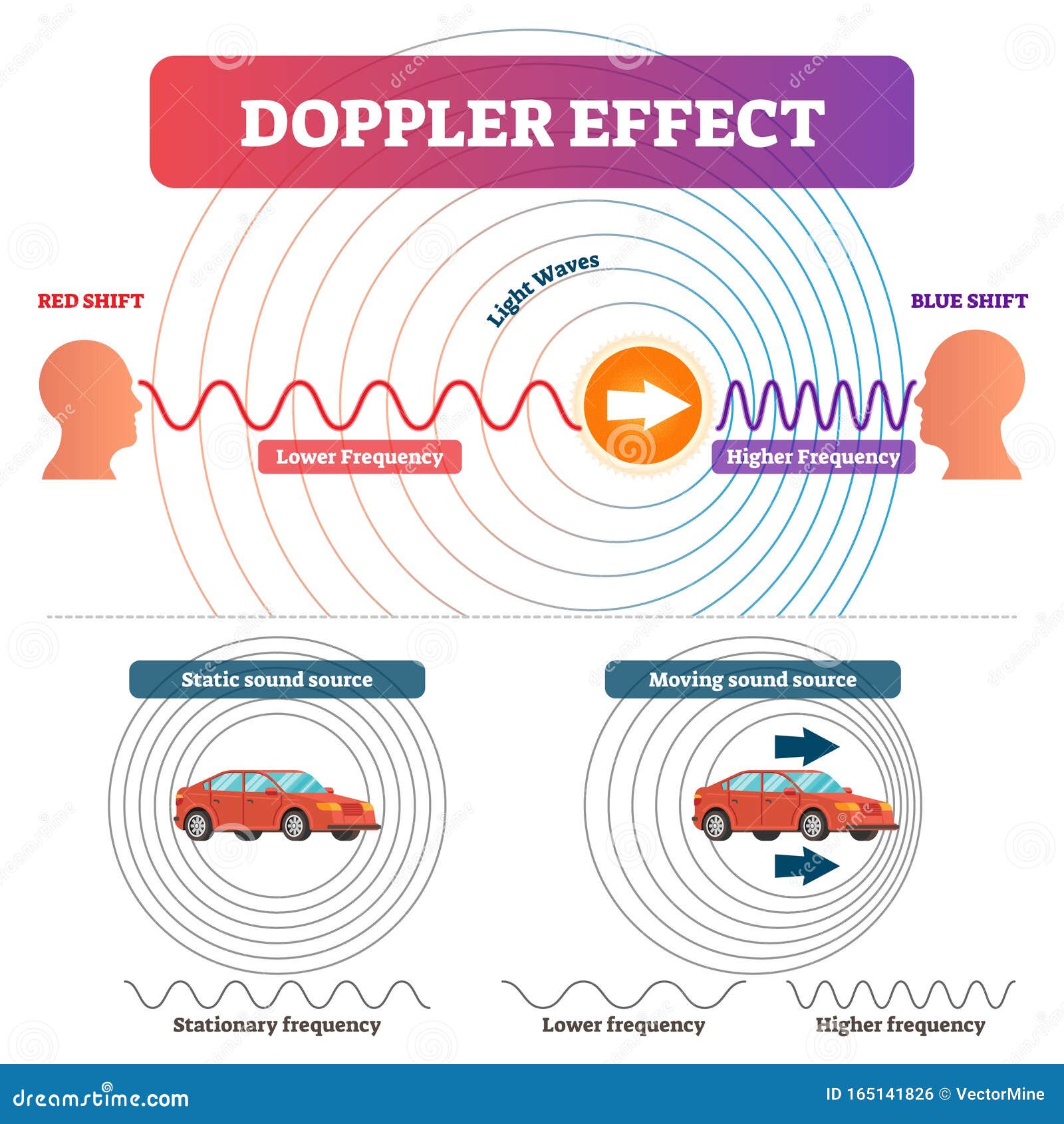- The Doppler effect is used in many technologies that benefit people. But it can have a negative impact, as well. For example, sonic booms, which are caused by supersonic aircraft, can cause objectionable sounds and vibrations on the ground, which is why supersonic airplanes are not allowed to fly over populated areas.
- The Doppler effect occurs not only for sound, but for any wave when there is relative motion between the observer and the source. Doppler shifts occur in the frequency of sound, light, and water waves, for example. Doppler shifts can be used to determine velocity, such as when ultrasound is reflected from blood in a medical diagnostic.
- The Doppler Effect got its name in 1842 after Christian Doppler a physicist from Australia who explained the phenomenon. An example of the Doppler effect will be the variance in the pitch of a track sounding its horn from a distance as it approaches and goes by a nearby observer. At this point, the quantity of frequency received is very high.
Doppler effect occurs when a source of sound moves. A typical example is the change of pitch heard when a vehicle sounding its horn or siren as it approaches and recedes from an observer. The pitch heard by the observer depends on the frequency of the sound wave. Download chrome update 2016bitsoftsoftsc. A high frequency corresponds to a high pitch.
The Doppler effect is an effect observed in light and sound waves as they move toward or away from an observer. One simple example of the Doppler effect is the sound of an automobile horn. Picture a person standing on a street corner. A car approaches, blowing its horn. As the car continues moving toward the person, the pitch of the horn appears to increase; its sound goes higher and higher. As the car passes the observer, however, the effect is reversed. The pitch of the car horn becomes lower and lower.

Explanation

All waves can be defined by two related properties: their wavelength and frequency. Wavelength is the distance between two adjacent (next to each other) and identical parts of the wave, such as between two wave crests (peaks). Frequency is the number of wave crests that pass a given point per second. For reference, the wavelength of visible light is about 400 to 700 nanometers (billionths of a meter), and its frequency is about 4.3 to 7.5 × 10 14 hertz (cycles per second). The wavelength of sound waves is about 0.017 to 17 meters, and their frequency is about 20 to 20,000 hertz.
The car horn effect described above was first explained around 1842 by Austrian physicist Johann Christian Doppler (1803–1853). To describe his theory, Doppler used a diagram like the one shown in the accompanying figure of the Doppler effect. Cara converter video ke mp3 download freeupstart. As a train approaches a railroad station, it sounds its whistle. The sound waves coming from the train travel outward in all directions. A person riding in the train would hear nothing unusual, just the steady pitch of the whistle's sound. But a person at the train station would hear something very different. As the train moves forward, the sound waves from its whistle move with it. The train is chasing or crowding the sound waves in front of it. An observer at the train station hears more waves per second than someone on the train. More waves per second means a higher frequency and, thus, a higher pitch.

An observer behind the train has just the opposite experience. Sound waves following the train spread out more easily. The second observer detects fewer waves per second, a lower frequency, and, therefore, a lower-pitched sound.
Words to Know
Hubble's law: The law that shows how the redshift of a galaxy can be used to determine its distance from Earth.

Redshift: The lengthening of the frequency of light waves as they travel away from an observer; most commonly used to describe movement of stars away from Earth.
It follows from this explanation that the sound heard by an observer depends on the speed with which the train is traveling. The faster the train is moving in the above example, the more its sound waves are bunched together or spread out—thus, the higher or the lower the pitch observed.
Doppler effect in light waves
Doppler predicted that the effect in sound waves would also occur with light waves. That argument makes sense since sound and light are both transmitted by waves. But Doppler had no way to test his prediction experimentally. Doppler effects in light were not actually observed, in fact, until the late 1860s.
In sound, the Doppler effect is observed as a difference in the pitch of a sound. In light, differences in frequency appear as differences in color. For example, red light has a frequency of about 5 × 10 14 hertz; green light, a frequency of about 6 × 10 14 hertz; and blue light, a frequency of about 7 × 10 14 hertz.
Suppose that a scientist looks at a lamp that produces a very pure green light. Then imagine that the lamp begins to move rapidly away from the observer. The Doppler effect states that the frequency of the light will decrease. Instead of appearing to be a pure green color, it will tend more toward the red end of the spectrum. The faster the lamp moves away from the observer, the more it will appear to be first yellow, then orange, then red. At very high speeds, the light coming from the lamp will no longer look green at all, but will have become red.
Applications
The green lamp example described above has been used to great advantage by astronomers when observing stars. The light of a star as seen
from Earth is always slightly different from its true color because all stars are in motion. When astronomers observe stars in our own Milky Way galaxy, for example, they find that the color of some stars is shifted toward the blue, while the color shift in other stars is toward the red. Blueshift stars are moving toward Earth, and redshift stars are moving away from Earth.
In 1923, American astronomer Edwin Hubble (1889–1953) made an interesting discovery. He found that all stars outside our own galaxy exhibit redshifts of light. That is, all stars outside our galaxy must be moving away from Earth. Furthermore, the farther away the stars are, the more their redshift and, thus, the faster they are moving away from us.
Hubble's discovery is one of the most important in all of modern astronomy. It tells us that the universe as a whole is expanding. Like dots on the surface of a balloon that's being blown up, galaxies throughout the universe are racing away from each other. One conclusion to be drawn from this discovery is that—at some time in the past—all galaxies must have been closer together at the center of the universe. Ever since that time, those galaxies have been moving away from each other. This conclusion is the basis for the currently popular theory about the creation of the universe, the big bang theory.
Doppler Effect Example Light
The Doppler effect has many other practical applications. Weather observers can bounce radar waves off storm clouds. By studying the frequency of the waves that return, they can determine the direction and speed with which the clouds are moving. Similarly, traffic police use radar guns to determine the speed of vehicles. The faster a car or truck is traveling, the greater the change in the frequency of the radar waves it reflects.
Doppler Effect Example In Sound
Sound waves are used for underwater observations. A submarine sends out sound waves that are reflected off other underwater objects, such as another submarine or a school of fish. The frequency of the reflected sound tells the direction and speed of the other object.
